Tom S. Chung AIA

Job title and company: Principal, Leers Weinzapfel Associates
Degree(s): BS in Architecture, University of Virginia; March, Harvard University Graduate School of Design
Professional interests: Architecture, landscape architecture, industrial design, and urban design
What are you working on now?
The Integrated Design Building at UMass/ Amherst. It will be the first engineered mass timber building of its composite CLT [cross-laminated timber] technology in the Northeast United States!
How do you explain to your mom what you do for a living?
She knows I design buildings and city spaces and thus better environments for all of us to live in. As for the nuances of architecture, her interest wanes. When I told her our company ranked No. 9 in Architect magazine’s 2015 Architect 50 list, she was very proud.
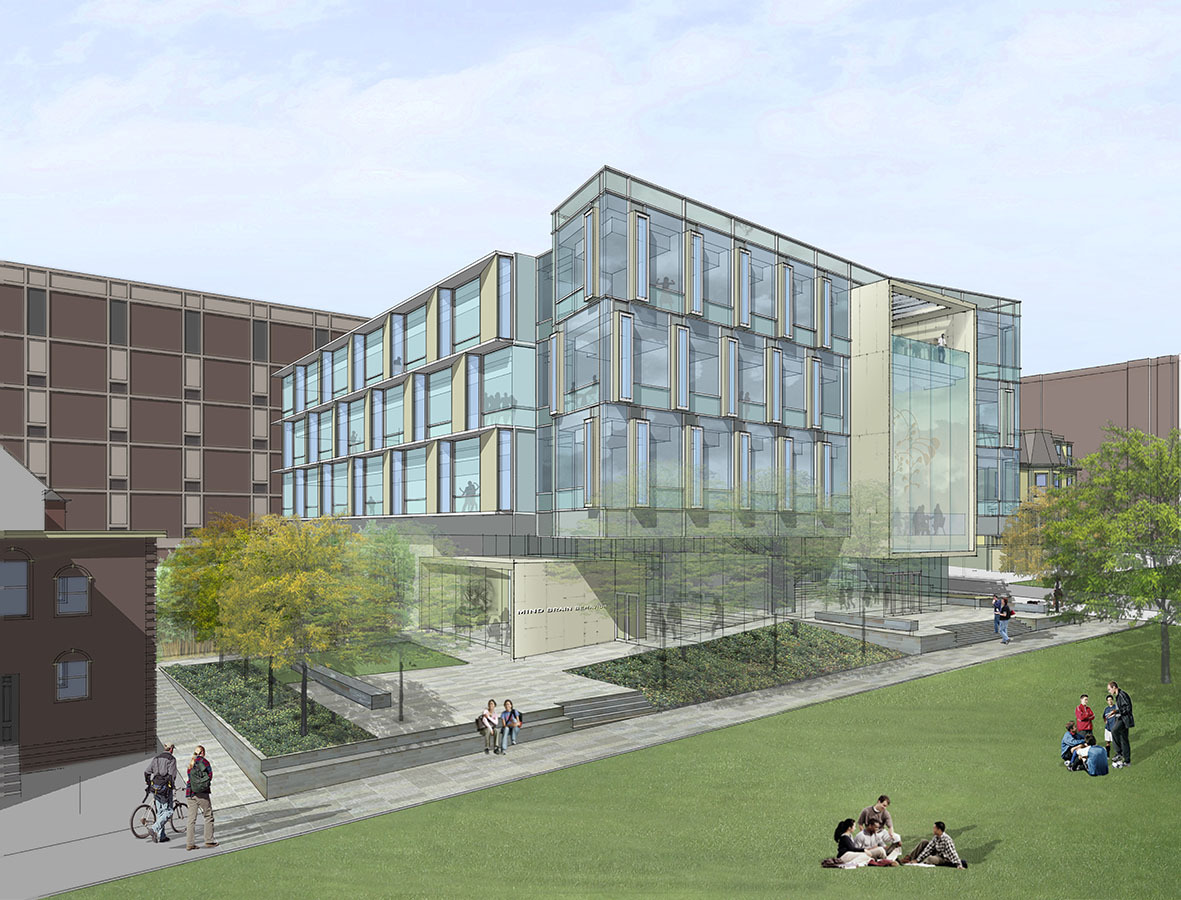
Rendering of the Mind Brain Building at Brown University. Image: Leers Weinzapfel Associates.
What inspired you today?
Seeing my daughter (she’s 11) all dressed up for school pictures today and realizing how much she has grown and being utterly thankful.
What architectural buzzword would you kill?
Not sure if they are buzzwords, but parti and charrette. We should use language that the lay people understand whenever we can, so we can relate better.
When you’re working, do you discuss or exchange ideas with your colleagues?
All the time. Our office is collaborative, and we bounce ideas off each other and encourage especially the younger staff to speak up, but they have to be able to articulate and defend their viewpoints so that it becomes a serious discourse, not just people saying what their likes and dislikes are.
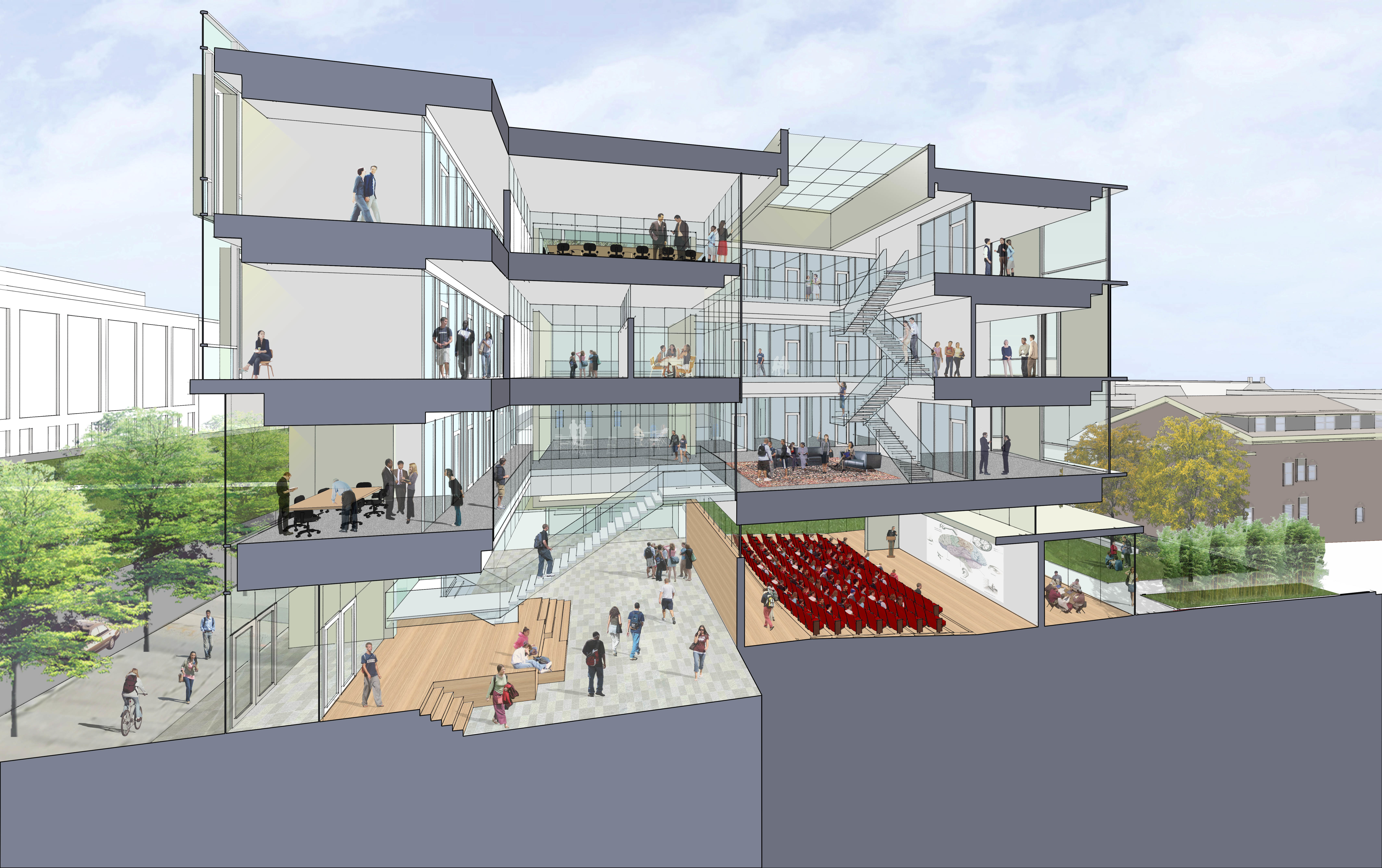
Section Perspective of the Mind Brain Building at Brown University. Image: Leers Weinzapfel Associates.
What are you reading?
I recently read Steve Jobs by Walter Isaacson. A fascinating read . . . better than a soap opera!
Do you sketch by hand or digitally?
By hand. It is an integral way of thinking and designing for me.
Has your career taken you anywhere you didn’t expect?
I certainly didn’t expect to be in Boston for 21 years now, still at my first and only job out of school. I guess that’s kind of rare, but I think it’s worked out so far.
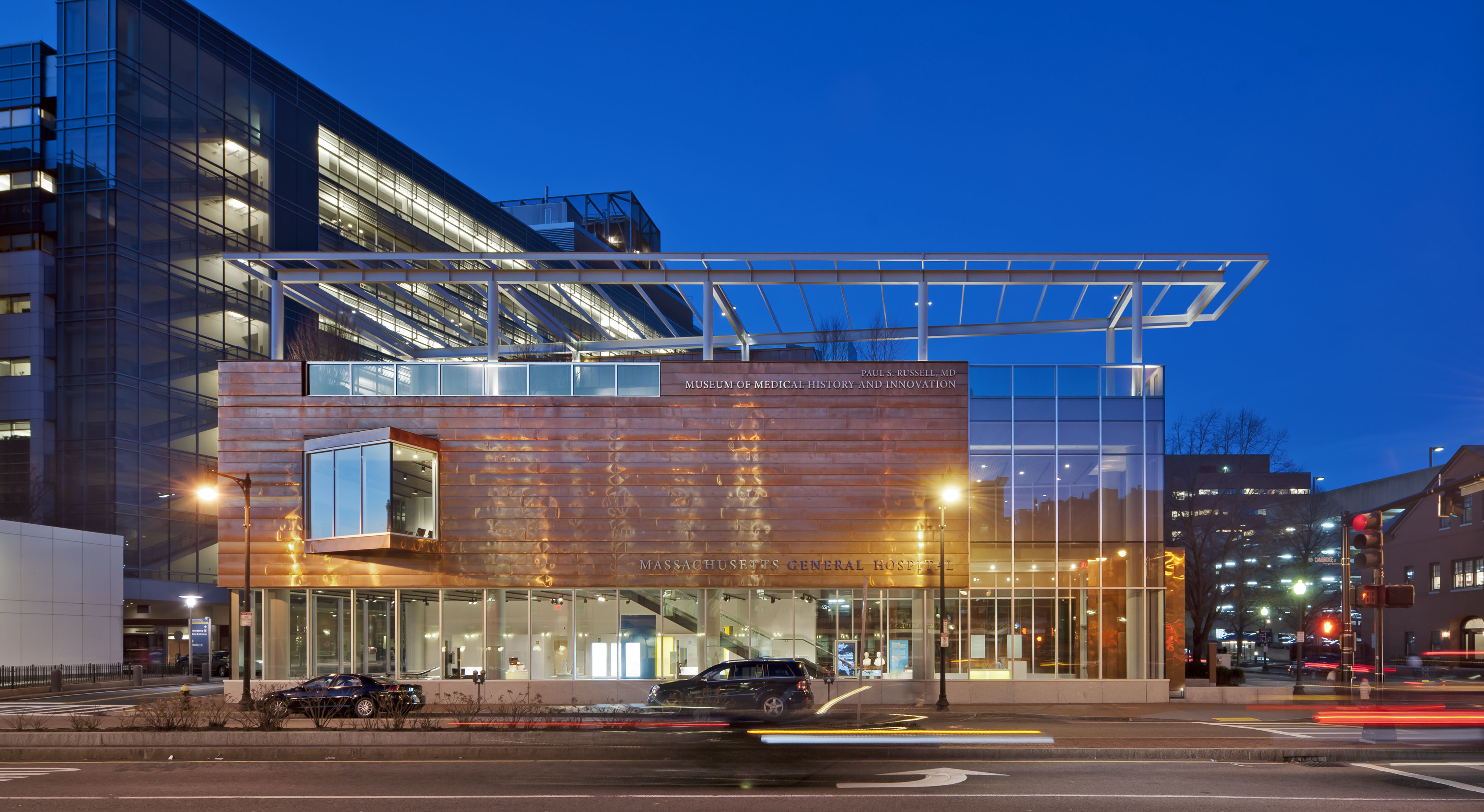
Museum of Medical History and Innovation at Massachusetts General Hospital. At night, the museum is a glowing beacon at the gateway of the hospital campus. Image: Anton Grassl / Esto.
Where is the field of architecture headed?
I see three things. First, architects are being asked to think bigger and help define the program, the issues (instead of getting a program from the client and just executing it) and I think that is great because architects are really the last Renaissance profession where the more you are aware of the issues outside architecture, the better you will be able to design. Second, the digital revolution with BIM and 3-D printing is drastically changing how we design and what we can build, and we, as architects, need to control and use that technology instead of that technology dictating how we design. Third, sustainability is at the forefront; and how we steward this planet we all share is critical and the built environment obviously is a huge factor in this global equation.
Can design save the world?
I’m not sure. Design alone definitely cannot save the world, but we, as architects, can and should lead the effort to build responsibly. Design, however, has power to elevate the public’s awareness of well-made things and how impactful that can be—and that can be a good business decision as well . . . just look at Apple and the iPhone. I hope this can translate into the built environment so that the public just won’t settle for half-baked, inhumane environments like strip developments.
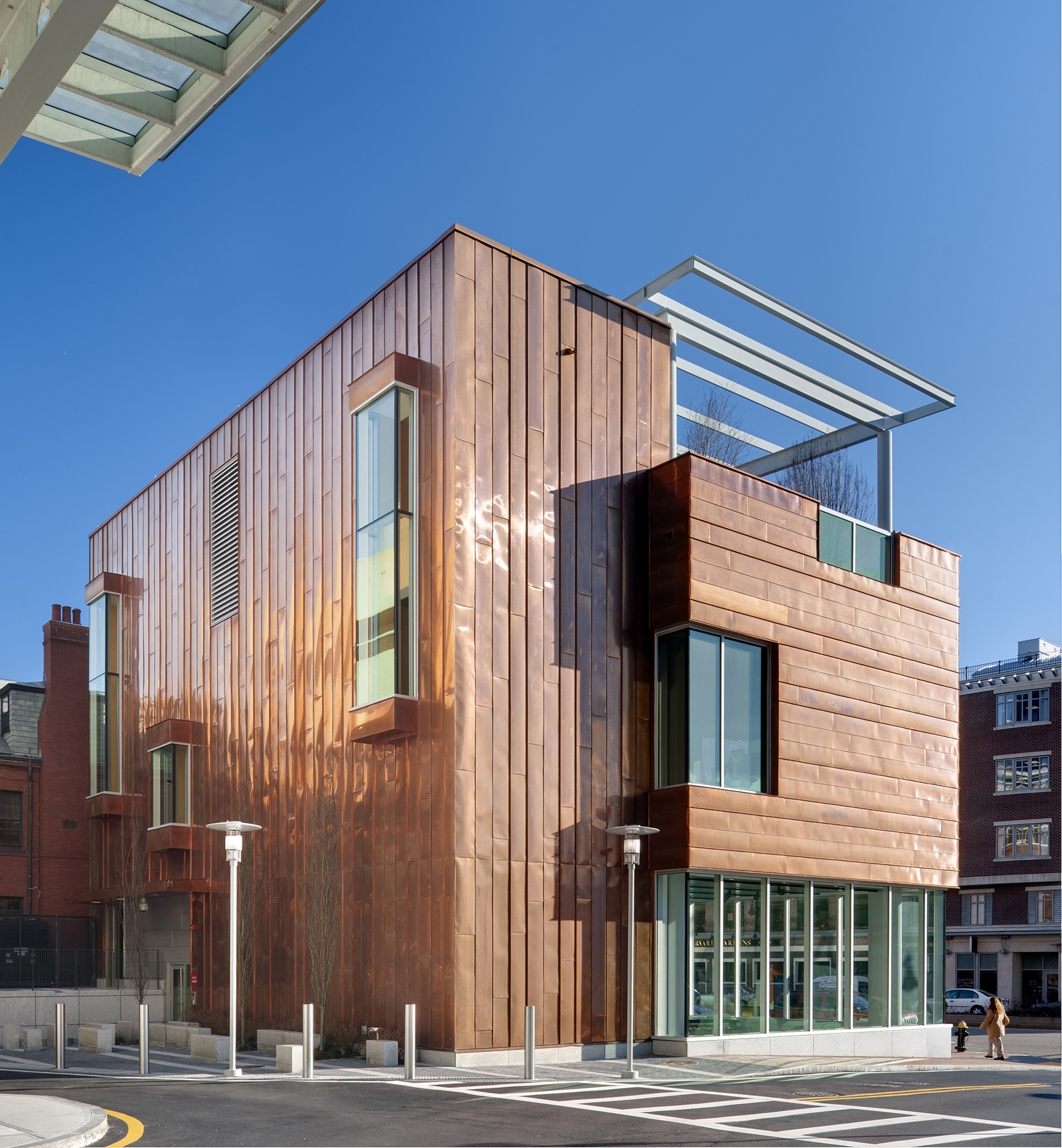
Museum of Medical History and Innovation at Massachusetts General Hospital. The copper wrapping of the museum is intricately detailed in standing and flat seam panels and combines with the copper-fritted glass to give the building the feel of a precious object. Image: Anton Grassl / Esto
The larger issue is really “Can we save us from ourselves?” and that’s a conversation involving the general public with issues of morality, ethics, charity, religion, politics, etc.
What do you hope to contribute from your work?
To design delightful places for people to work and live, to design inspiring spaces for people to wonder and think beyond their daily tasks, and to elevate the awareness of architecture in the general public’s conversation.
Who or what deserves credit for your success?
I was recently impressed by Denzel Washington’s commencement speech in which he exhorted the graduating class to be thankful to others for their success because they didn’t accomplish anything on their own. It is the same with whatever level of success I may have achieved thus far. I think my career and achievements are ahead of me; but, that being said, Jane Weinzapfel and Andrea Leers deserve credit for mentoring me professionally; certainly my parents for raising me and emphasizing the hard work ethic; my wife for being my partner in life and who, along with my mother-in-law, has done the bulk of the work of raising our two children thus far; and my God who makes my heart beat and gave me my abilities.
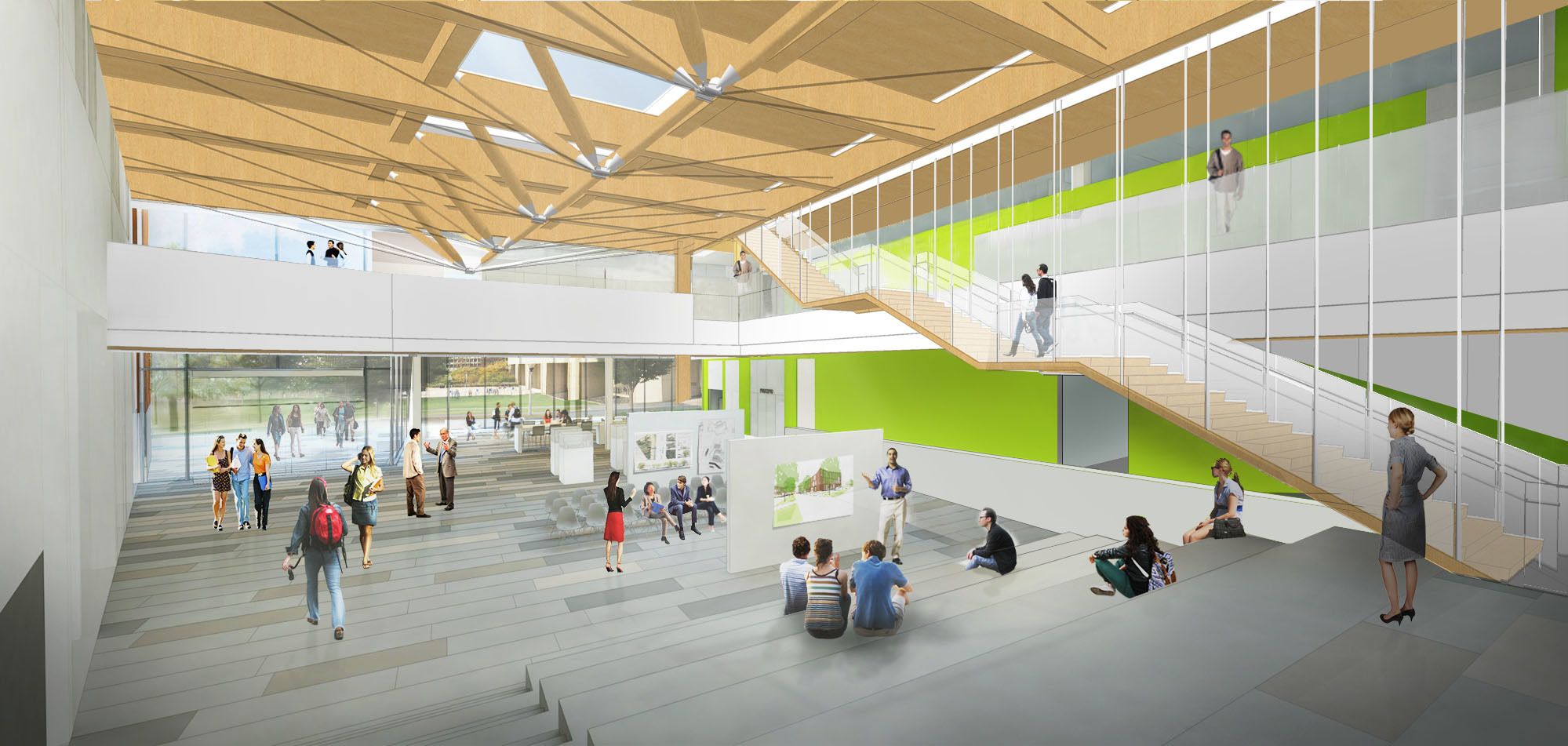
University of Massachusetts, Amherst – Design Building. Skylit Commons ares with wood zipper truss ceiling. Image: Leers Weinzapfel Associates.
Your least favorite college class?
Physics, because I didn’t pay attention and study and paid the consequences, and because I’m not naturally good with calculating things that accelerate. So I had to retake it as a condition of my acceptance to graduate school and am happy to say I did redeem myself.
If you could give the you-of-10-years-ago advice, what would it be?
Don’t take your self so seriously, but take your work seriously and remember to thank and compliment people who work for you and under you.
Your favorite Boston-area structure?
Can’t say I have a favorite, but Eero Saarinen’s MIT Chapel, Louis Kahn’s Phillips Exeter Academy Library, H.H. Richardson’s Ames Gate House in North Easton, and Le Corbusier’s Carpenter Center.
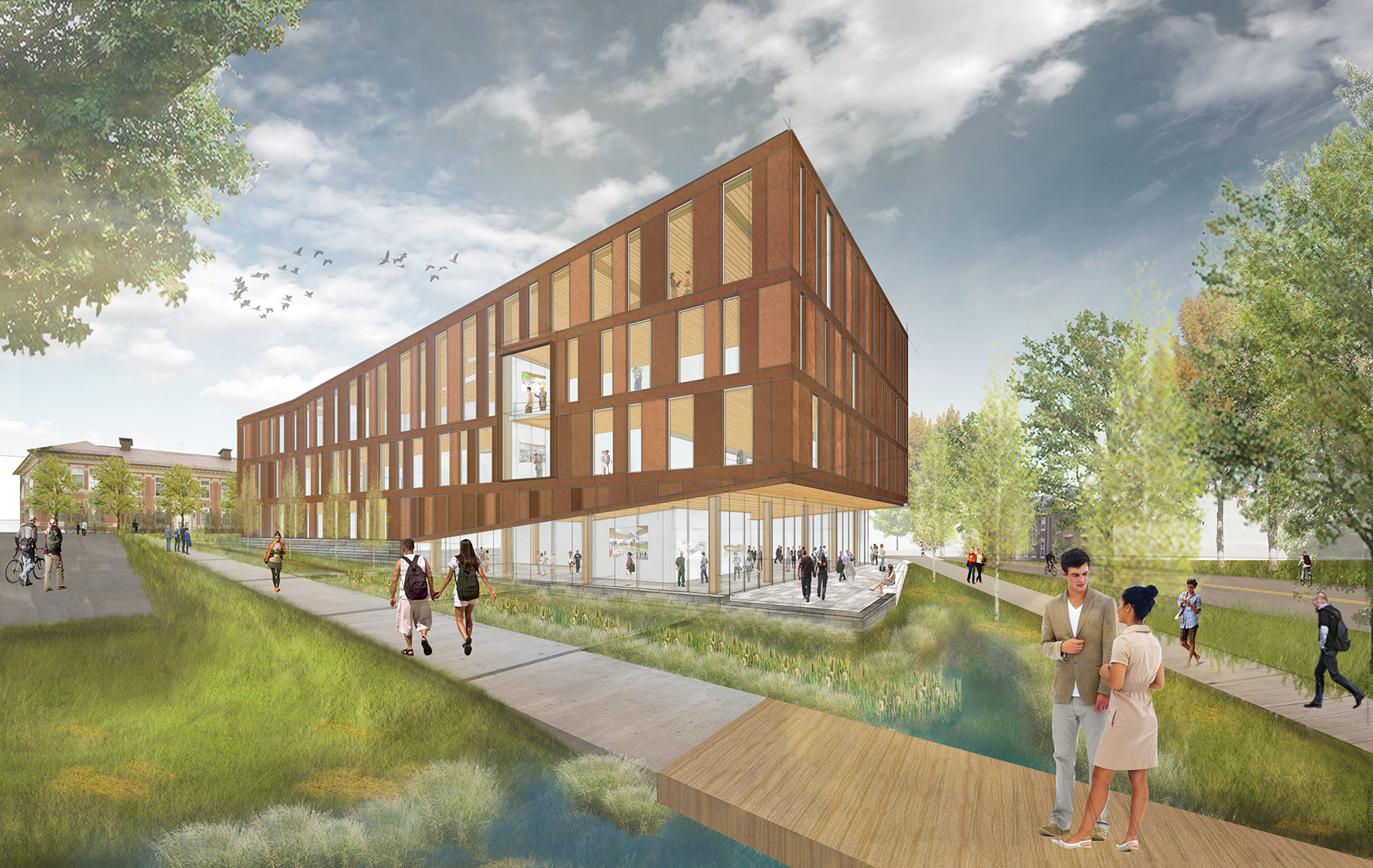
University of Massachusetts, Amherst – Design Building. View from North Pleasant Street. Image: Leers Weinzapfel Associates.
Whom would you like the BSA to interview next?
Boston-area architects whose work I admire: Maryann Thompson FAIA, Meejin Yoon AIA, Nader Tehrani. Or how about a landscape architect such as Stephen Stimson? He has a great story to tell, coming from a 10-generation dairy farm family in Central Massachusetts.) Or the most influential architect for me personally: Rafael Moneo.
If you were on a late-night TV show, what would your 30-second plug be?
Show great buildings and urban spaces and why they make a difference in all of our lives.
If you could sum up your outlook on life in a bumper sticker, what would it say? Sorry, but I’m not a bumper-sticker guy. Even if I had something passionate to say, it wouldn’t be on a bumper sticker.
